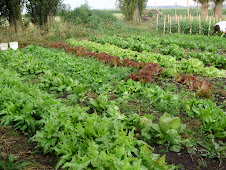
The Churro sheep were brought from Spain in 1540 and became the first domestic sheep in America. By the 1800’s the Navajo-Churro sheep had become extremely popular in the Southwestern United States, especially amongst the Hispanic and Native American populations. The sheep were valued for both their meat the fleece, which soon became an important part of the textile production.
The United States government destroyed almost all of the Navajo-Churro sheep in the 1860s in at attempt to control the Native American Indians. By the 1930s there were very few purebred Navajo-Churros remaining. A professor from Utah State University began a program on 1977 to restore the Navajo-Churro sheep to the prominence. Over the last thirty years, the breed has grown from just a small flock to a few thousand sheep and although still considered threatened according to the American Livestock Breeding Conservancy, they are making gains in populations.
In the 1860s, the Navajo-Churro sheep population was nearly destroyed as part of the United States government’s efforts to subjugate the Navajo people. Churro stock was further diluted by continuing efforts to "improve" Native American flocks through introduction of other breeds. The government’s attempts to control rangeland erosion led to further slaughter of -Native American flocks. By the mid-1930s, very few "purebred" Navajo-Churros remained, and they were scattered across the Southwest.
Both ewes and rams may be polled or have two or four horns. Mature rams average 160–200 pounds and mature ewes about 100–120 pounds. The breed is noted for prolificacy. Lambs are easily born and vigorous, and the ewes are excellent mothers. The weaning rate is high, especially given the environment. Navajo-Churros have a double-coated fleece that weighs four to six pounds. The fine, soft inner coat provides insulation, and the long, coarse outer coat protects the inner coat from dust and dirt while repelling rain and snow. The fleece is low in grease, which makes it easy to process. Navajo-Churro sheep are found in several colors, including white, silver, blue, brown, red, black, and spotted. Patterns such as badger face are common. This range of hues is valued by wool crafters and sheep breeders alike. The wool of the Navajo-Churro is primarily considered a carpet wool and it is often used for rug weaving. Navajo-Churro sheep are part of the Ark of Taste sponsored by Slow Foods, USA, which is another reason that we wanted this breed.
Our flock was purchased from a farm in Montana who had purchased them from a breeder in the tri-cities. We started with 5 ewes, 3 rams and 2 whethers and since had 1 of our ewes die, which we replaced with a ewe from a farm in Monroe. We also have used to the sheep for our own food supply. This year we had 6 lambs and we will be selling those for meat later this year once they get close to 100 pounds.



1 comment:
hello! i've just got my hands on some navajo churro fleece that is in tact, i'm looking for some advice on the best way to process it...i want to keep the long "locks" together, and seperate them from the fleecy down. now, should i wash it before i do this, or wash each thing seperately? usually to wash fleece, i just soak it in hot hot hot water and some dawn and then just keep rinsing and draining till it's clean.
Post a Comment